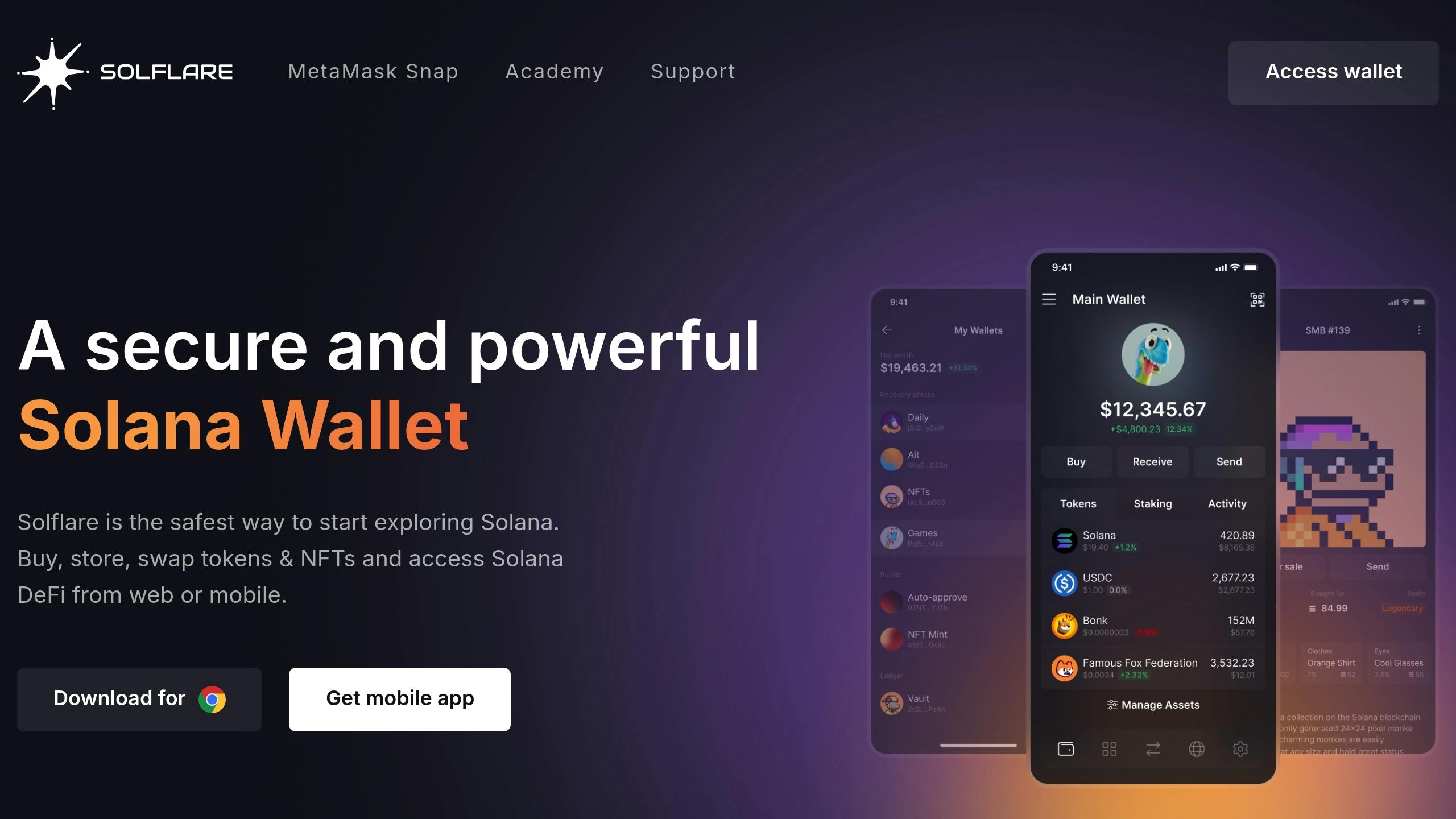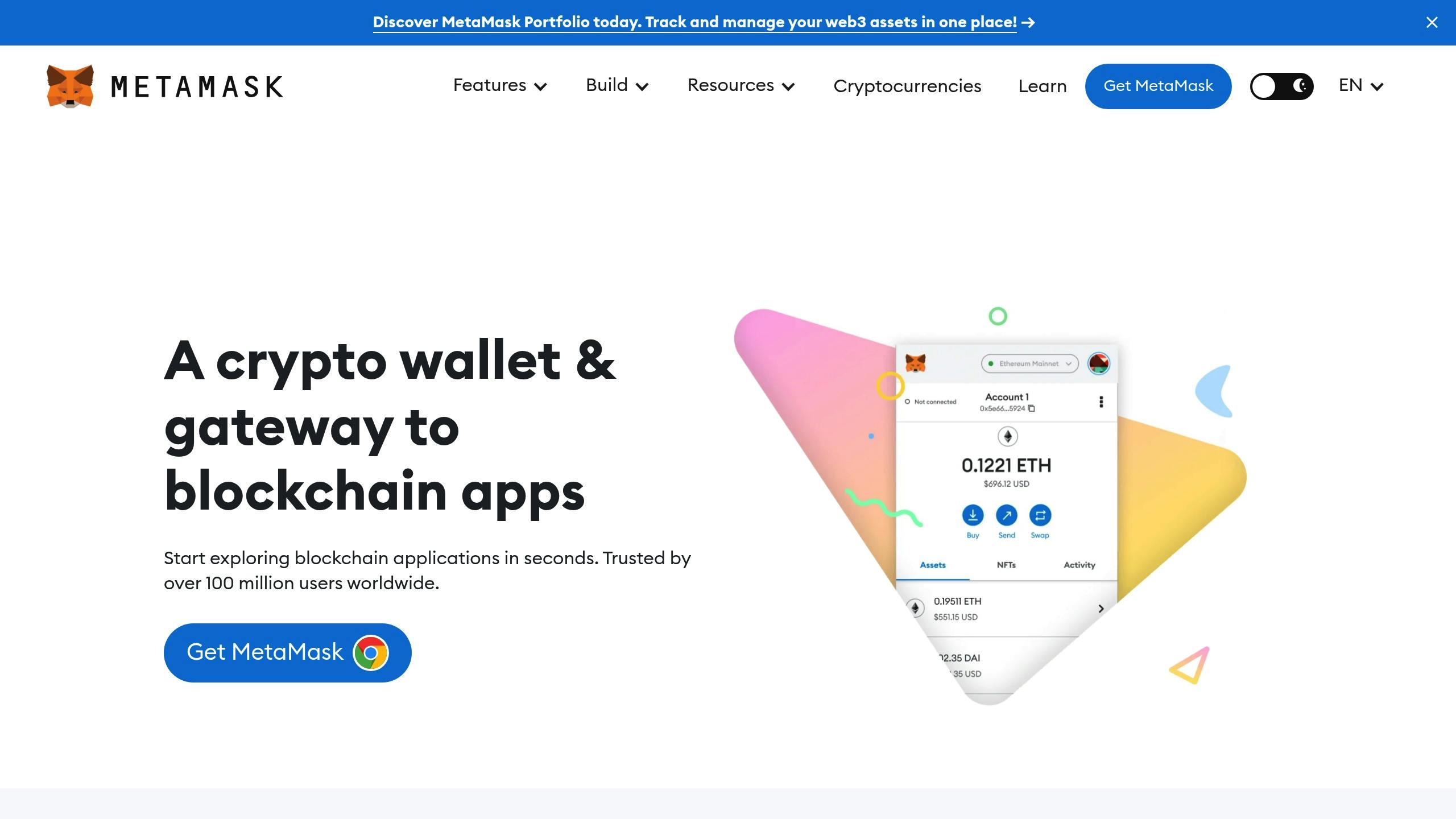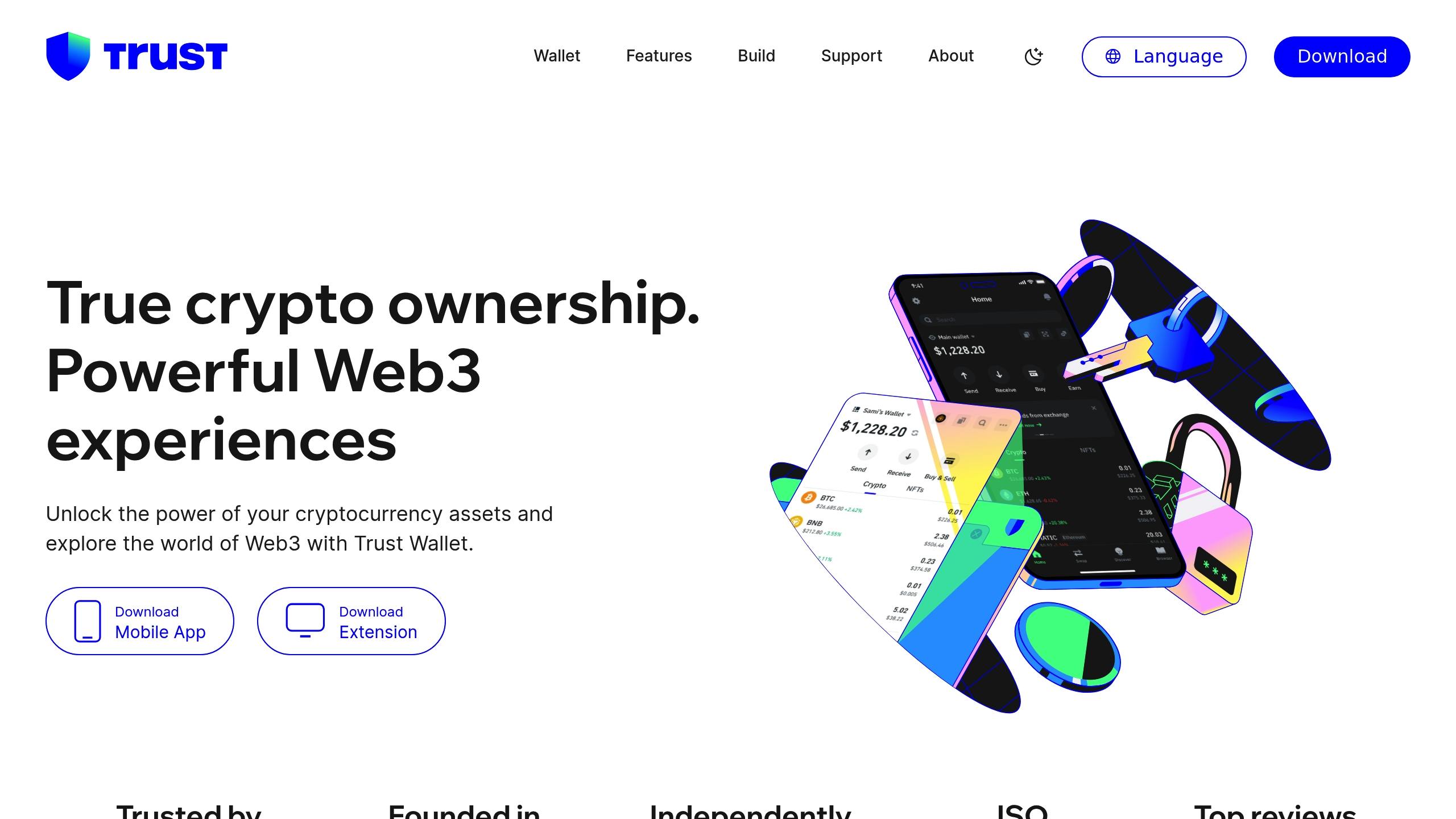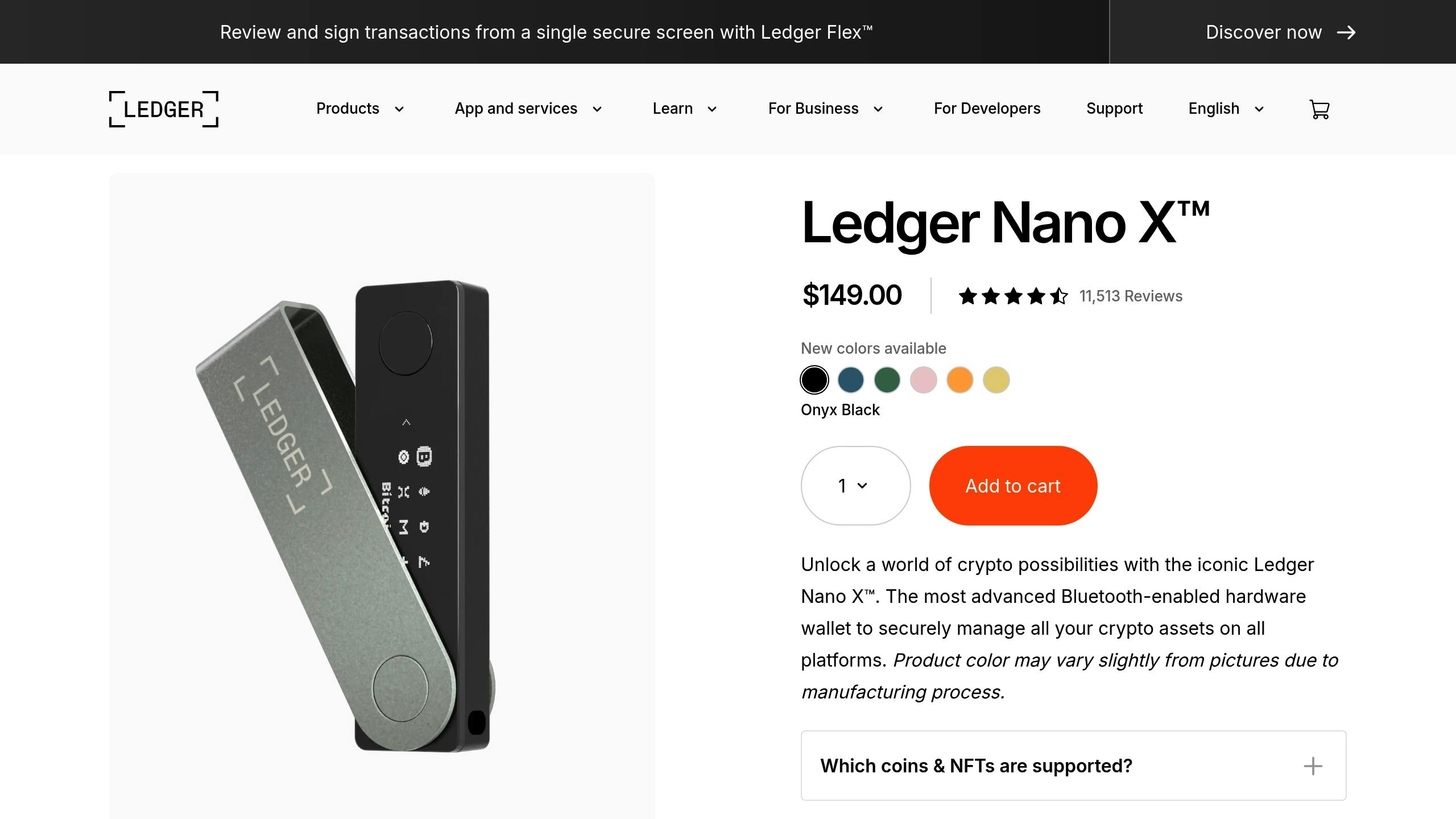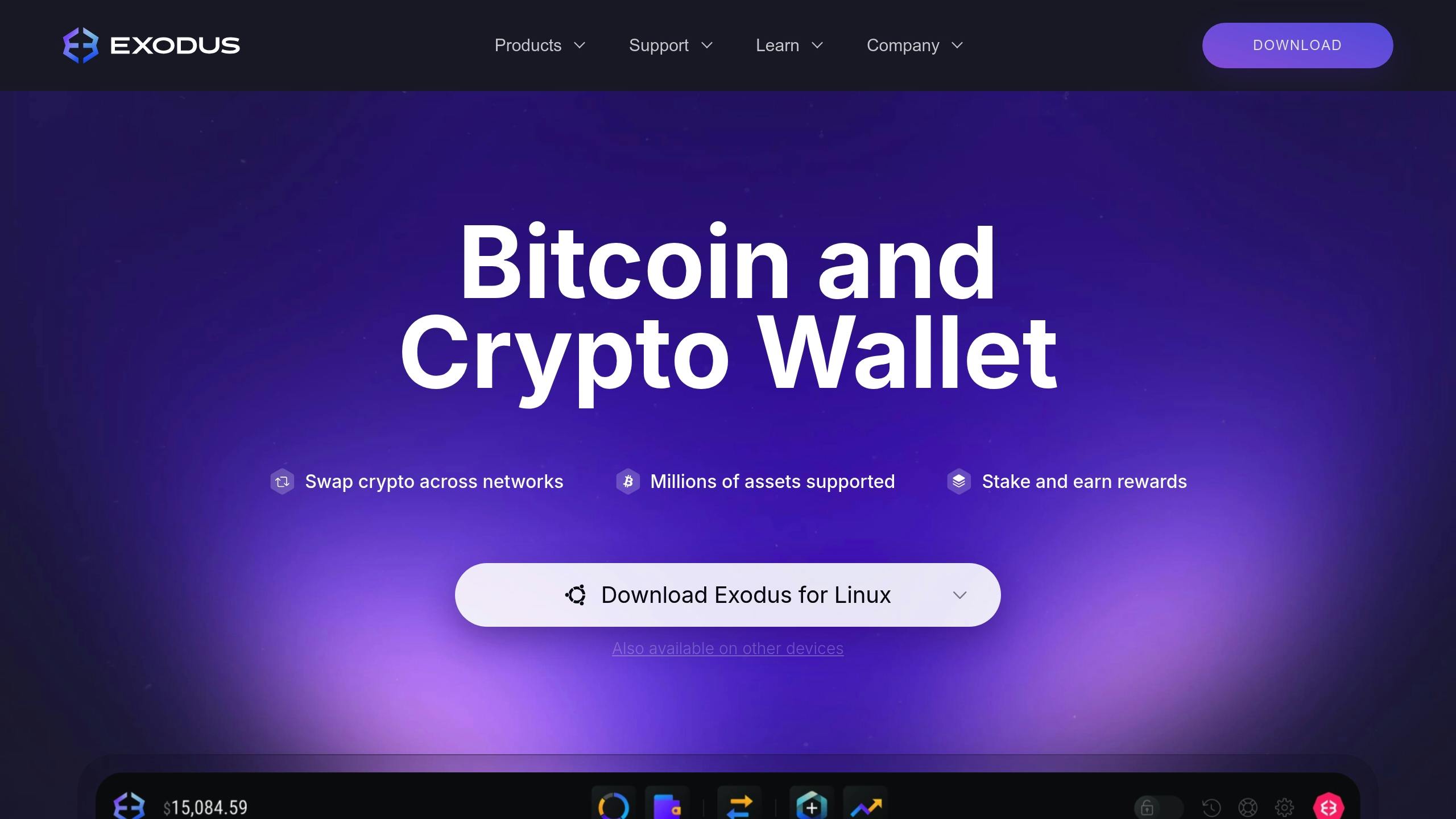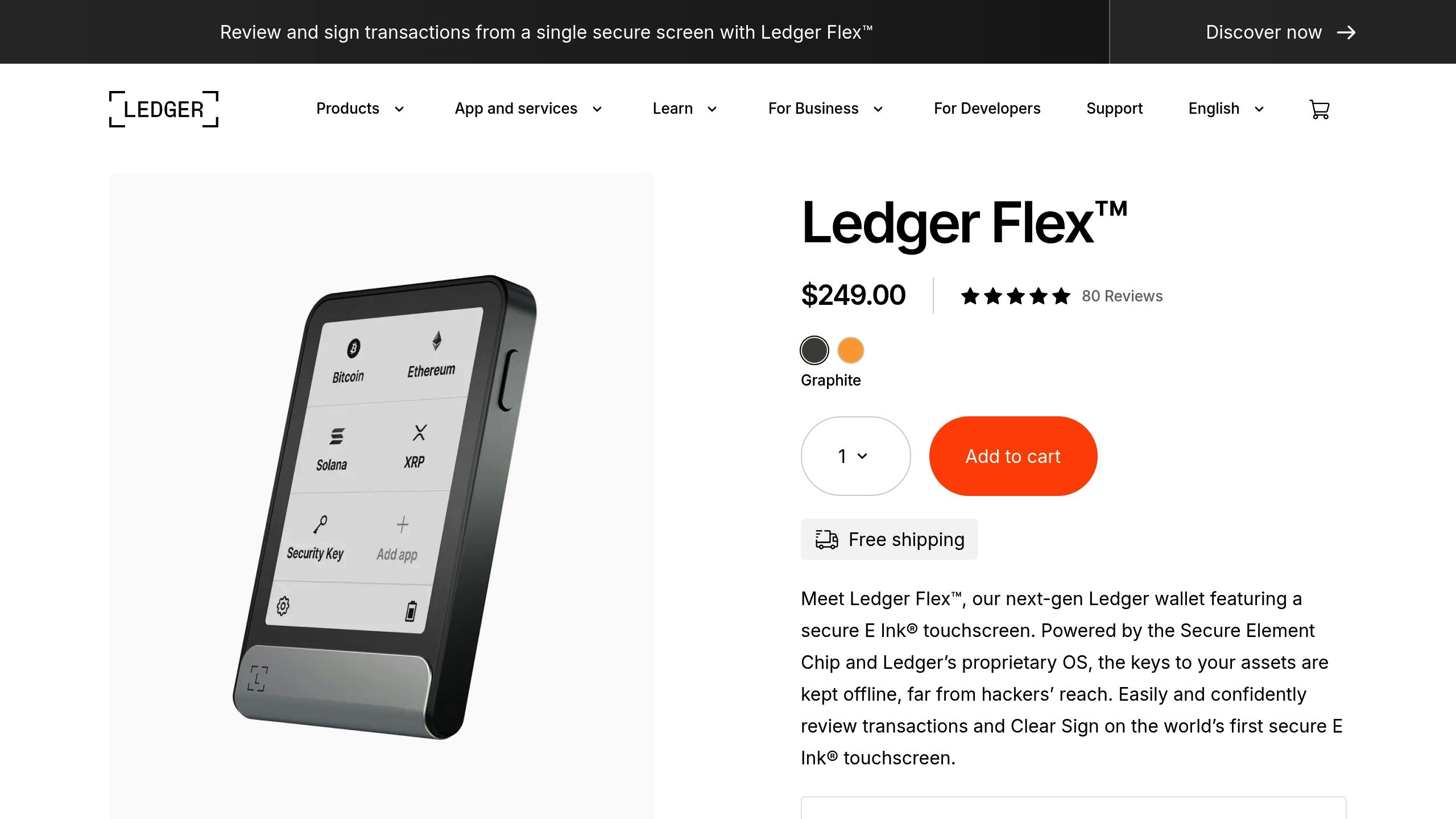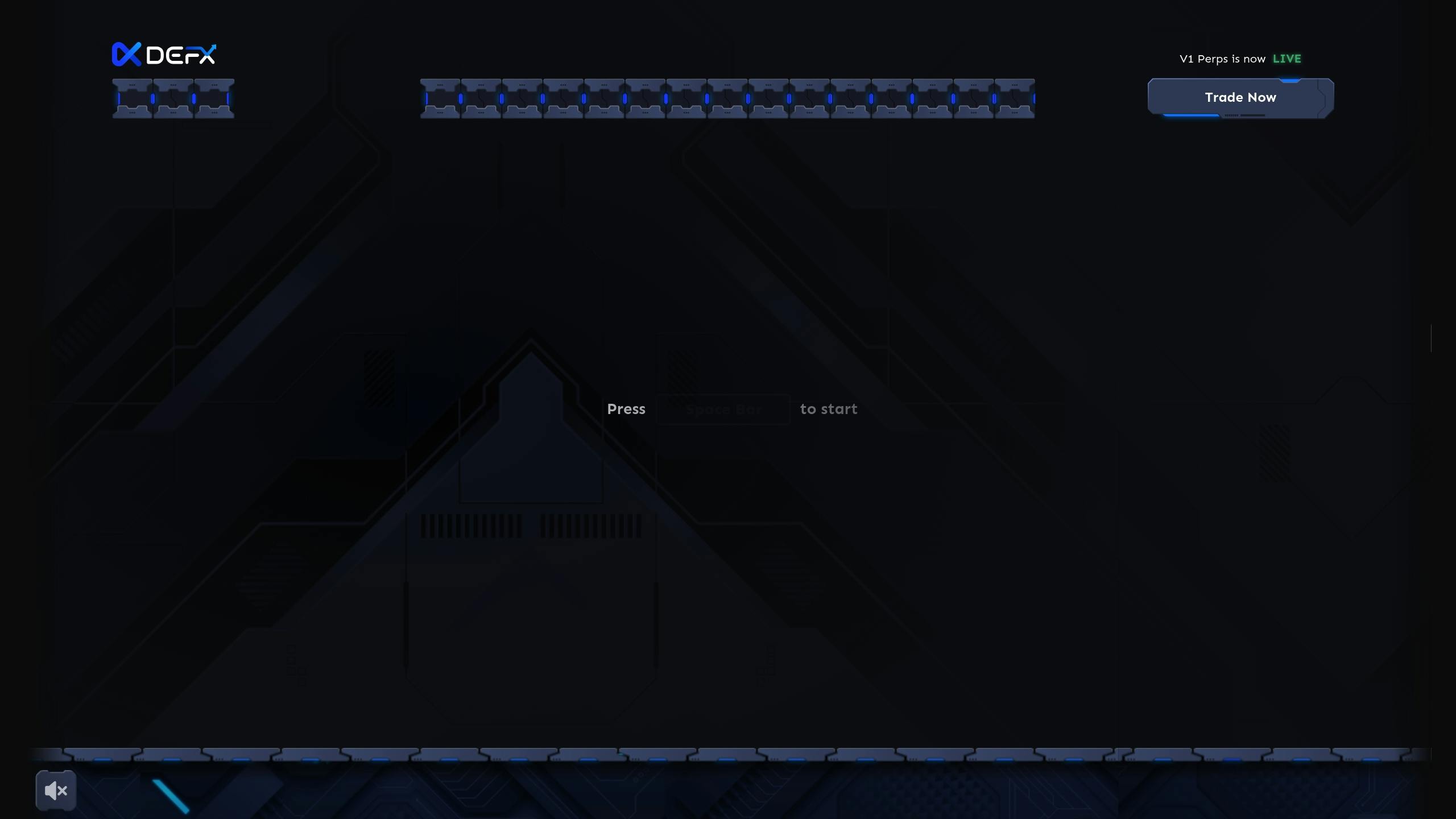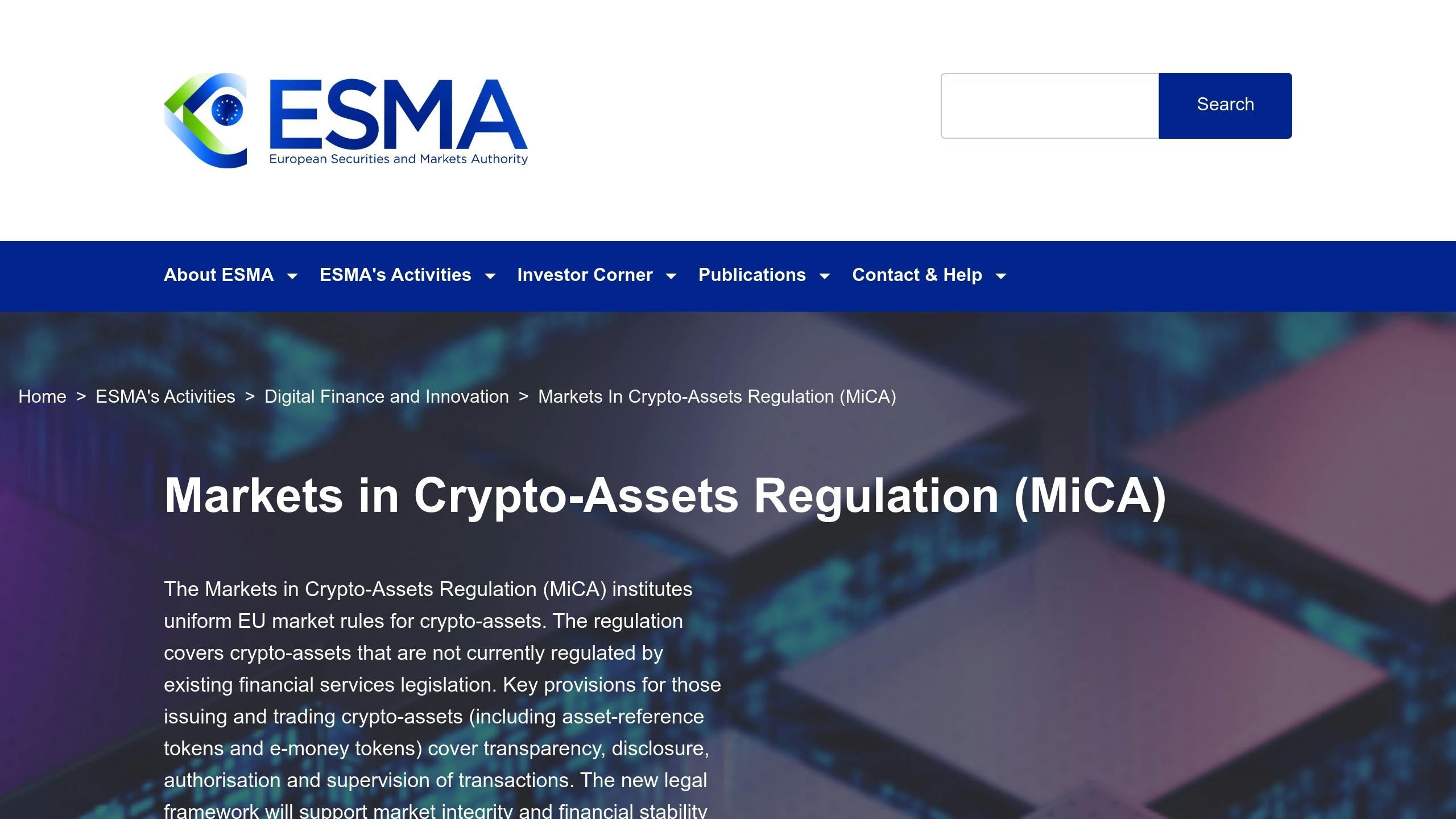Phantom Wallet is a non-custodial cryptocurrency wallet designed for managing assets across Solana, Ethereum, and Polygon. It offers features like staking, token swapping, NFT management, and hardware wallet integration. Here’s a quick overview:
- Key Features: SOL staking, in-app token swaps (0.85% fee), NFT organization, and multichain support.
- Security: Self-custody with Ledger integration; users must securely store seed phrases.
- Best For: Active traders and Solana users seeking convenience and fast transactions.
For those prioritizing security, hardware wallets like Ledger Nano X and Trezor Safe 5 provide offline storage and advanced protection, albeit at higher costs.
Quick Comparison
| Wallet | Key Benefits | Limitations |
|---|---|---|
| Phantom Wallet | Fast transactions, SOL staking, multichain support | Less secure than hardware wallets, relies on seed phrase |
| Ledger Nano X | Offline key storage, Bluetooth, supports 5,500+ tokens | Expensive, requires physical device for access |
| Trezor Safe 5 | Physical verification, broad asset support | No Bluetooth, fewer supported coins than Ledger |
Choose based on your needs: Phantom for convenience, Ledger for security, or Trezor for a balance of usability and protection.
Beginner’s Phantom Wallet Tutorial

1. Phantom Wallet Overview
Phantom Wallet is a non-custodial tool designed to manage assets on the Solana, Ethereum, and Polygon networks.
Here’s a quick breakdown of its main features:
| Feature Category | Capabilities | Network Support |
|---|---|---|
| Asset Management | Token swaps, NFT handling, staking | All supported chains |
| Security Features | Self-custody, Ledger integration, password protection | Platform-wide |
| Network Operations | In-app swaps (0.85% fee), validator delegation | Chain-specific |
Key Features
Strong Security Measures
Phantom Wallet prioritizes security with self-custody and Ledger integration. These features ensure users maintain full control over their assets while adding an extra layer of protection.
Staking Options
The wallet simplifies staking by helping users choose validators that offer high APY and low commission rates, maximizing returns across supported networks.
NFT Management
Phantom’s NFT interface is user-friendly and practical. It filters out spam, organizes collections, tracks real-time floor prices, and shows holder statistics – perfect for keeping tabs on assets in decentralized trading.
Built-in Token Swapping
The wallet’s swap feature works across all supported networks. With a flat 0.85% service fee plus standard network charges, it offers an affordable solution for cross-chain transactions.
Browser Extension
Phantom Wallet is accessible via its official browser extension, making it convenient for users to interact with their assets directly from their browser.
Important Note
Users must back up their seed phrases securely. Losing this information could result in permanent wallet loss.
2. Defx Perps DEX Features

Defx Perps DEX is designed for traders who want to dive into leveraged trading in the decentralized finance space. The platform combines powerful trading tools with a simple, intuitive interface.
Trading Capabilities
Defx Perps DEX allows traders to leverage up to 50x with both isolated and cross-margin options, giving users more control over their risk strategies.
| Feature Type | Specifications | Benefits |
|---|---|---|
| Leverage Options | Up to 50x | Greater trading opportunities |
| Margin Types | Isolated & Cross | Risk management flexibility |
| Order Matching | High efficiency | Minimized slippage |
| Market Types | Spot & Perpetual Futures | Broader trading choices |
Security Architecture
The platform prioritizes fund safety by using multi-signature wallets, secure off-chain order matching, and on-chain settlement. Its non-custodial design ensures users maintain full control over their assets.
Advanced Trading Tools
Defx Perps DEX equips traders with tools like real-time market data, customizable charts, and streamlined order placement. Early access to token markets is also available, giving users an edge in the trading game.
Fee Structure
A maker-taker fee model encourages liquidity on the platform. Market makers benefit from reduced fees, while takers enjoy competitive rates, creating a balanced and active trading environment.
Platform Integration
Defx Perps DEX integrates smoothly with various DeFi protocols in the Solana ecosystem. This integration unlocks features such as:
- Permissionless token listing
- Participation in liquidity pools
- Access to cross-platform yield opportunities
The platform also offers detailed documentation to help traders make the most of its risk management tools. These features make Defx Perps DEX a key player in the decentralized trading space, paving the way for further analysis.
3. Ledger Nano X Analysis

The Ledger Nano X combines top-tier security with user-friendly features. It uses a Certified Secure Element (CC EAL5+) chip, which has been independently verified by ANSSI.
Security Architecture
The Nano X employs encrypted Bluetooth alongside a secure chip to safeguard private keys. This two-layer security system ensures your assets stay protected, even when accessing them via mobile devices. Additionally, the 24-word recovery seed acts as a backup, letting you restore your accounts if the device is lost or compromised. These security measures work seamlessly across both mobile and desktop platforms.
| Security Feature | Description | Benefit |
|---|---|---|
| Secure Element | CC EAL5+ certified chip | High-level security for keys |
| Bluetooth Encryption | End-to-end encrypted connection | Secure mobile asset management |
| Recovery System | 24-word seed phrase | Full account recovery capability |
| Hidden Wallet | Multiple PIN-protected wallets | Enhanced privacy for users |
Asset Management Capabilities
The Nano X supports over 5,500 cryptocurrencies and tokens and can host up to 100 wallet applications at once. This broad compatibility makes it ideal for users managing a variety of digital assets across different blockchain networks.
Mobile Integration
With its built-in battery and Bluetooth connectivity, the Nano X pairs easily with smartphones through the Ledger Live app. This wireless feature offers a level of convenience that USB-only hardware wallets can’t match, allowing users to manage their assets anytime, anywhere.
Storage and Interface
The Nano X includes upgraded storage, eliminating the hassle of frequently uninstalling and reinstalling wallet apps. Its larger screen makes transaction verification straightforward and user-friendly.
Integration with Software Wallets
The device works seamlessly with software wallets like Phantom, combining the ease of digital management with the added security of hardware storage. This integration offers a more complete solution for managing digital assets.
Weighing just 34 grams, the Nano X is designed for portability. It comes with practical accessories like a USB Type-C cable and a keychain strap. While it is priced higher than basic hardware wallets, its advanced features and robust security make it a worthwhile investment for serious crypto users.
sbb-itb-dd9e24a
4. Trezor Safe 5 Review
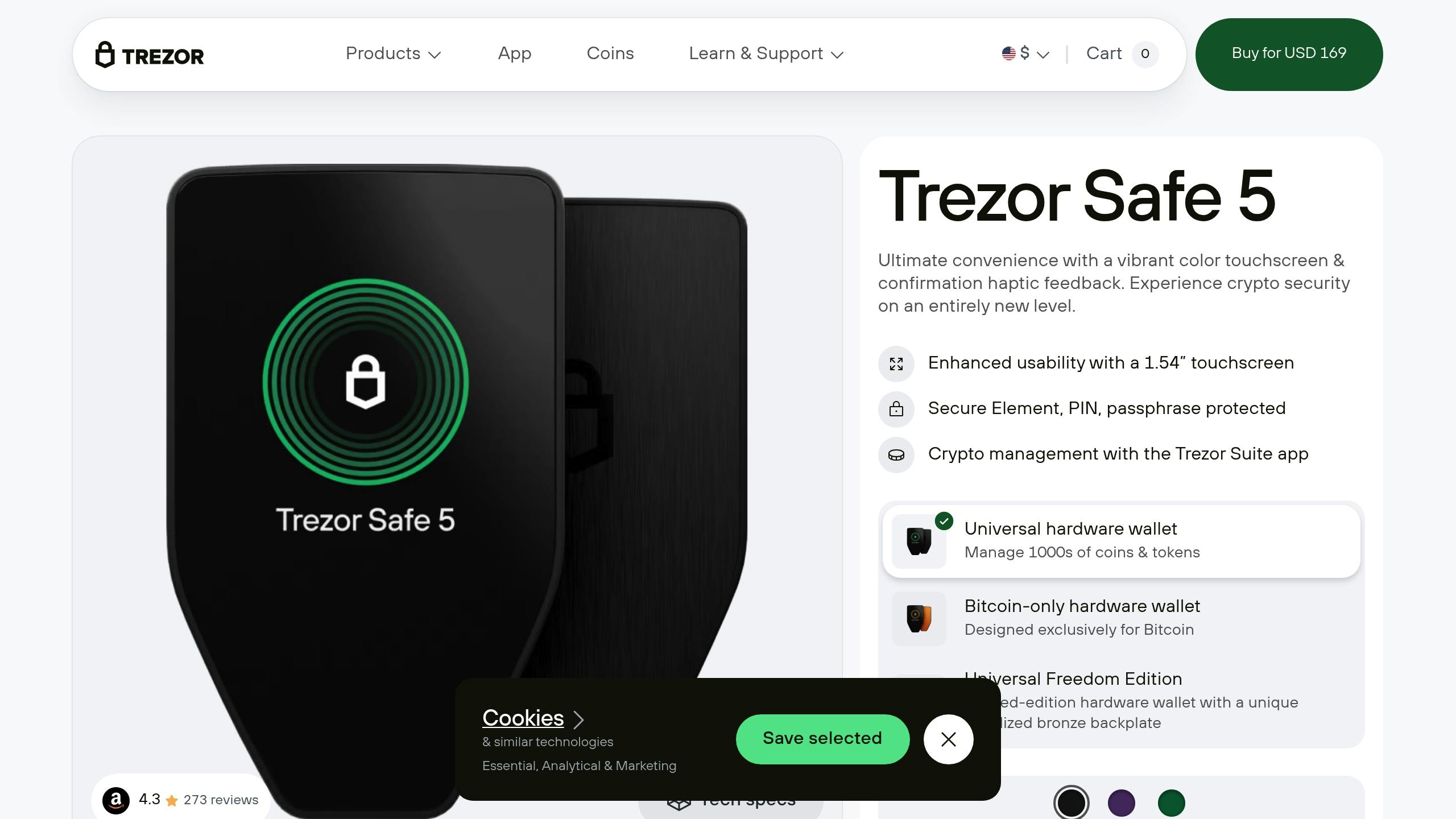
After our deep dive into the Ledger Nano X, let’s take a closer look at the Trezor Safe 5, another strong contender for secure asset management. This hardware wallet stands out with its advanced security setup, powered by the STMicroelectronics STM32 microcontroller, and a user-friendly touchscreen interface.
Security Features
Trezor Safe 5 is built around a hierarchical deterministic wallet system, which requires users to manually confirm transactions through physical buttons. This approach adds an extra layer of protection against unauthorized access.
| Security Feature | How It Works | Why It Matters |
|---|---|---|
| Secure Chip | STMicroelectronics STM32 | Protects keys from tampering |
| Transaction Confirmation | Physical button verification | Safeguards against remote threats |
| Wallet Structure | Hierarchical deterministic design | Keeps assets well-organized |
Asset Support
This wallet supports a wide range of blockchain networks, including Bitcoin, Ethereum, and ERC-20 tokens. By integrating with the Trezor Suite software, users can efficiently manage their cryptocurrency portfolios and even NFT collections.
Trezor Safe 5 doesn’t just focus on compatibility; it also ensures the experience is simple and accessible.
User-Friendly Design
The touchscreen interface strikes a balance between ease of use and strong security. It’s designed to make navigating and managing assets hassle-free while keeping safety top of mind.
Seamless Integration
With Trezor Suite software, the device connects to major cryptocurrency platforms, offering a unified solution for managing digital assets, handling transactions, and interacting with different blockchain networks.
Portfolio Management
In addition to its cryptocurrency features, the Trezor Safe 5 includes tools for managing NFTs, making it a great option for active traders who value both security and control.
Although it’s priced higher than basic wallets, the Trezor Safe 5 combines advanced security, an intuitive interface, and broad network support, making it a solid choice for serious investors and traders.
Key Benefits and Limitations
Here’s a quick comparison of the strengths and drawbacks of popular wallets:
| Wallet | Key Benefits | Limitations |
|---|---|---|
| Phantom Wallet | • Non-custodial setup for full asset control • Native SOL staking with validator options • Supports multiple chains (Solana, Ethereum, Polygon) • In-app token swapping • Strong NFT management tools |
• Limited Ledger hardware wallet integration (no Firefox support) • Restricted mobile functionality for hardware pairing • Risk of losing assets if the seed phrase is lost |
| Ledger Nano X | • Bluetooth connection with encryption • Offline private key storage • Compatible with 1000+ cryptocurrencies • High-level security certifications • Can hold up to 100 wallet apps |
• Higher cost • Non-replaceable battery with a 5-year lifespan • Requires the physical device for access • More complex for beginners |
| Trezor Safe 5 | • Physical verification for transactions • Seamless integration with Trezor Suite |
• Expensive • No Bluetooth support • Limited mobile features • Fewer supported coins compared to Ledger Nano X |
For those prioritizing security, hardware wallets like Ledger Nano X and Trezor Safe 5 are excellent choices. They offer offline storage and advanced protection but come with higher costs and a steeper learning curve.
On the other hand, Phantom Wallet is ideal for active Solana users and traders. Its multichain support, in-app token swapping, and native staking features make it highly convenient, though users must carefully safeguard their private keys.
Ultimately, the best wallet depends on your trading habits and how much security you require.
Final Assessment
After reviewing the features in detail, here are tailored wallet recommendations based on different cryptocurrency usage profiles:
- Active Traders: Phantom Wallet is ideal for its fast transaction speeds and low fees, making it perfect for frequent trading on Solana-based platforms. Its built-in integration with platforms like Defx Perps DEX ensures smooth trading within the Solana ecosystem.
- Security-First Investors: Ledger Nano X stands out for its strong security features, including the CC EAL5+ Security Certification and secure element chip. It keeps private keys offline and can manage up to 100 cryptocurrency apps, making it a solid choice for long-term holders with diverse portfolios.
- Multi-Chain Portfolio Managers: While Phantom Wallet is great for managing Solana-based assets, Ledger Nano X offers broader support, handling over 5,500 coins and tokens. Its Bluetooth connectivity enables secure management directly from smartphones, with the option to purchase assets through Ledger.
- Stakers: Phantom Wallet supports native SOL staking, making it a convenient option. However, pairing it with Ledger Nano X adds an extra layer of security for staking activities.
| User Profile | Primary Recommendation | Secondary Option | Key Consideration |
|---|---|---|---|
| Active Traders | Phantom Wallet | Ledger Nano X | Transaction speed and DEX integration |
| Security-Focused | Ledger Nano X | Offline key storage and certification | |
| Multi-Chain Users | Ledger Nano X | Phantom Wallet | Number of supported networks |
| Stakers | Phantom Wallet | Ledger Nano X | Native staking capabilities |
For those new to decentralized finance, Phantom Wallet provides an easy starting point, especially within the Solana ecosystem. As portfolios expand or include assets across multiple blockchains, upgrading to Ledger Nano X enhances security and versatility.
This overview leads directly into the next section, where we’ll address common user questions in the FAQ.
FAQs
Balancing ease of use with security is a key challenge in decentralized trading. These FAQs address common concerns, expanding on the features and comparisons mentioned earlier.
What are the downsides of Phantom Wallet?
Phantom Wallet offers strong functionality on Solana, but it does come with some limitations, especially when compared to hardware wallets:
- Less secure than hardware wallets
- Requires an active internet connection
- Primarily supports Solana, with limited multichain capabilities
- Relies on a seed phrase for backup, lacking the layered security of hardware wallets
These factors make it less ideal for those prioritizing maximum security.
Is staking on Phantom Wallet safe?
Phantom Wallet includes several features to enhance staking safety. It allows users to delegate tokens while keeping direct control, reducing the risks tied to third-party custody.
| Feature | Benefit |
|---|---|
| In-wallet Token Storage | Users maintain full control of their assets |
| Validator Statistics | Helps users make informed decisions |
| Commission Transparency | Clear breakdown of fees and rewards |
| Direct Management | Avoids reliance on third-party services |
While these features offer a good level of transparency and control, users should still weigh the general security limitations of software wallets when staking.



